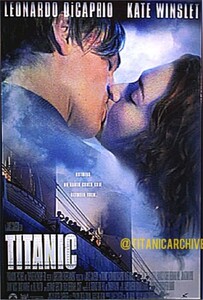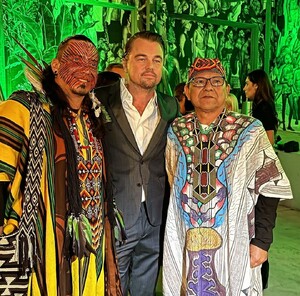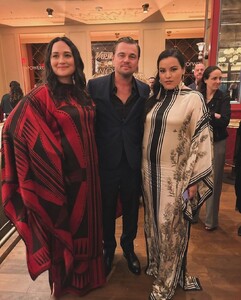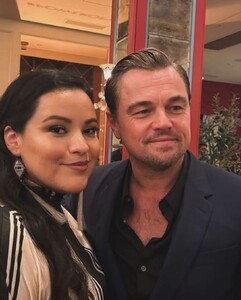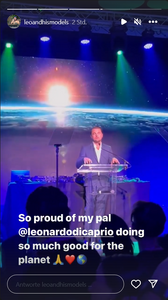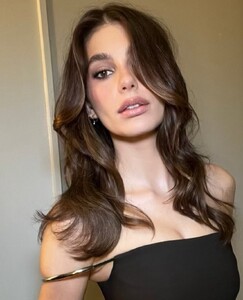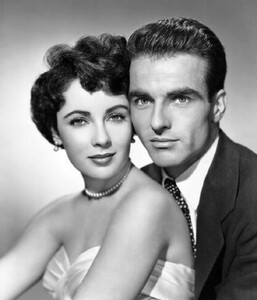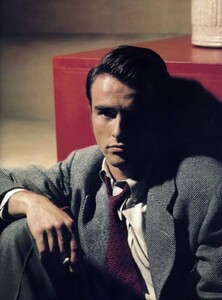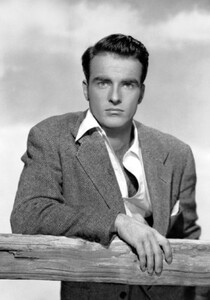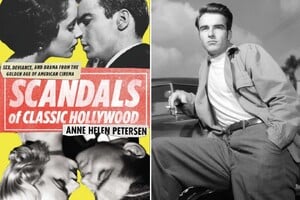
Everything posted by Jade Bahr
-
Taylor Swift
- Emma Stone
- Cailee Spaeny
- Margot Robbie
- Jennifer Lawrence
- Leonardo DiCaprio - (Please Read First Post Prior to Posting)
Also congrats to the king of course 🤩- Leonardo DiCaprio - (Please Read First Post Prior to Posting)
Just 2 queens no biggie 👑 Also Lily leading by miles Lead Actress/Performance rewarded by critics so far Lily Gladstone – Killers of the Flower Moon (AFCC, BSFC, NBR, NYFCC, WAFCA) Lily Gladstone – The Unknown Country (Gotham) Sandra Hüller – Anatomy of a Fall (LAFCA) Sandra Hüller – The Zone of Interest (LAFCA) Emma Stone – Poor Things (LAFCA, MMCG) The males. Lead Actor/Performance rewarded so far by critics Paul Giamatti – The Holdovers (BSFC, MMCG, NBR) Cillian Murphy – Oppenheimer (AFCC, WAFCA) Franz Rogowski – Passages (NYFCC) Jeffrey Wright – American Fiction (MMCG) Justin Chang & Glenn Whipp debrief on the LAFCA voting this year: CHANG: I’m going to go out on a limb and suggest that our shutout of the roundly admired “Killers of the Flower Moon” had something to do with the fact that it had already won best picture from our fine colleagues in the New York Film Critics Circle. We sometimes do align with our East Coast counterparts (this year, we all agreed on Randolph, “Menus-Plaisirs,” and “The Boy and the Heron”), but in general, I’d say LAFCA runs cooler on late-career Scorsese than the NYFCC does. Scorsese was one of our New Generation winners too, way back in 1976, a year when he would have been a more-than-respectable best director choice for “Taxi Driver.” He went on to win our best picture prizes for “Raging Bull” (1980) and “Goodfellas” (1990), but since then, zilch. (And now I’m having flashbacks, Glenn, to you and me and not very many others pushing 2016’s “Silence,” his greatest film of the 21st century, in every category we could.) All that being said, the strength of support for Gladstone in both the leading and supporting categories—and we specifically voted on lead performance first, to make sure that she and other actors weren’t being classified as supporting by default—speaks to the depths of the group’s admiration for her performance, even if other actors ultimately drew more support in the voting. It’s possible too that after we chose Gladstone as best supporting actress for her heartbreakingly great performance in Kelly Reichardt’s “Certain Women” (2016), LAFCA simply wanted to award someone new. https://www.latimes.com/entertainment-arts/movies/story/2023-12-11/what-went-down-at-that-lafca-vote-as-told-by-two-voters- Leonardo DiCaprio - (Please Read First Post Prior to Posting)
IndieWire Critics Poll Topped by ‘Killers of the Flower Moon’ Here is yet another list that’s topped by Martin Scorsese’s late-career statement, “Killers of the Flower Moon.” It’s turned into the most acclaimed film of the year by appearing in the most year-end top 10 lists. IndieWire polled 158 critics and asked them to submit their picks for the best films of 2023. I decided to abstain in participating this year since it was just too early for me to come up with my ten best films. Scorsese’s “Killers of the Flower Moon” topped the poll, followed by Christopher Nolan’s “Oppenheimer,” Yorgos Lanthimos’ “Poor Things” Celine Song’s “Past Lives” and Todd Haynes’ “May December.” IndieWire will eventually release the top 50 results. For now, the top 10 for Film, Director and Performance — BEST FILM 1. “Killers of the Flower Moon” 2. “Oppenheimer” 3. “Poor Things” 4. “Past Lives” 5. “May December” 6. “The Zone of Interest” 7. “Anatomy of A Fall” 8. “Barbie” 9. “The Holdovers” 10. “Asteroid City” BEST DIRECTOR 1. Martin Scorsese, “Killers of the Flower Moon” 2. Christopher Nolan, “Oppenheimer” 3. Jonathan Glazer, “The Zone of Interest” 4. Yorgos Lanthimos, “Poor Things” 5. Todd Haynes, “May December” 6. Greta Gerwig, “Barbie” 7. Celine Song, “Past Lives” 8. Wes Anderson, “Asteroid City” 9. Justine Triet, “Anatomy of a Fall” 10. Albert Serra, “Pacifiction” BEST PERFORMANCE 1. Emma Stone, “Poor Things” 2. Lily Gladstone, “Killers of the Flower Moon” 3. Sandra Hüller, “Anatomy of a Fall” 4. Cillian Murphy, “Oppenheimer” 5. Charles Melton, “May December” 6. Paul Giamatti, “The Holdovers” 7. Ryan Gosling, “Barbie” 8. Andrew Scott, “All of Us Strangers” 9. TIE: Greta Lee, “Past Lives”; Jeffrey Wright, “American Fiction” 10. TIE: Glenn Howerton, “BlackBerry”; Benoit Magimel, “Pacifiction”; Koji Yakusho, “Perfect Days”; Franz Rogowski, “Passages” BEST INTERNATIONAL FILM 1. “Anatomy of a Fall” 2. “The Zone of Interest” 3. “The Boy and the Heron” 4. “Perfect Days” 5. “Fallen Leaves” 6. “The Taste of Things” 7. “Pacifiction” 8. “Godzilla Minus One” 9. “Afire” 10. “The Eight Mountains” BEST CINEMATOGRAPHY 1. “Oppenheimer” 2. “Poor Things” 3. “Killers of the Flower Moon” 4. “The Zone of Interest” 5. “All Dirt Roads Taste of Salt” 6. “Barbie” 7. “Pacifiction” 8. “El Conde” 9. “Godland” 10. “John Wick: Chapter Four” BEST SCREENPLAY 1. “May December” 2. “Past Lives” 3. “Anatomy of a Fall” 4. “The Holdovers” 5. “American Fiction” 6. “Killers of the Flower Moon” 7. “Poor Things” 8. “Oppenheimer” 9. TIE: “Barbie”/”The Zone of Interest” 10. “Asteroid City” BEST DOCUMENTARY 1. “Kokomo City” 2. “Menus-Plaisirs: Les Troisgros” 3. “20 Days in Mariupol” 4. “De Humani Corporis Fabrica” 5. TIE: “Four Daughters”/”The Eternal Memory” 6. “Our Body” 7. “Beyond Utopia” 8. “A Still Small Voice” 9. “The Mission” 10. “Still: A Michael J. Fox Movie”- Last movie you saw...
One of my favorite movies. Not even Franco can ruin it. Beautiful soundtrack.- Leonardo DiCaprio - (Please Read First Post Prior to Posting)
Lily also won at WAFCA Best Actress Aunjanue Ellis-Taylor, Origin Lily Gladstone, Killers of the Flower Moon – WINNER Greta Lee, Past Lives Margot Robbie, Barbie Emma Stone, Poor Things https://awardswatch.com/2023-washington-dc-area-film-critics-association-wafca-winners-american-fiction-is-best-feature-oppenheimer-takes-six/- Leonardo DiCaprio - (Please Read First Post Prior to Posting)
Another win for Lily, Thelma and Robertson at BSFC Runner up for Best Ensemble.- Leonardo DiCaprio - (Please Read First Post Prior to Posting)
12 nominations for KOTFM Winners will be announced next sunday.- Leonardo DiCaprio - (Please Read First Post Prior to Posting)
Another win for Lily + Best Film Editing and Best Original Score Boston Society of Film Critics 2023 Best Film – “The Holdovers” Best Actor – Paul Giamatti, “The Holdovers” Best Actress – Lily Gladstone, “Killers of the Flower Moon” Best Supporting Actor – Ryan Gosling, “Barbie“ Best Supporting Actress – Da’Vine Joy Randolph, “The Holdovers” Best Director – Jonathan Glazer, “The Zone of Interest” Best Original Screenplay – David Hemingson, “The Holdovers” Best Adapted Screenplay – Jonathan Glazer, “The Zone of Interest” Best Cinematography – Jonathan Ricquebourg, “The Taste of Things” Best Documentary (awarded in memory of Lucia Small) – “Geographies of Solitude” Best Animated Film – “The Boy and the Heron” Best Film Editing (awarded in memory of Karen Schmeer) – Thelma Schoonmaker, “Killers of the Flower Moon” Best New Filmmaker (awarded in memory of David Brudnoy) – Celine Song, “Past Lives” Best Ensemble Cast – “Oppenheimer” Best Original Score – Robbie Robertson, “Killers of the Flower Moon” Best Non-English Language Film – “The Zone of Interest”- Leonardo DiCaprio - (Please Read First Post Prior to Posting)
LAFCA showed little love for KOTFM yesterday. Only Runner-up 2 times. No win. They also put Lily into supporting. But always happy to see Rachel McAdams gettin some recognition- Leonardo DiCaprio - (Please Read First Post Prior to Posting)
2023 Washington DC Critics Nominations (WAFCA) Best Director Greta Gerwig, Barbie Yorgos Lanthimos, Poor Things Christopher Nolan, Oppenheimer Martin Scorsese, Killers of the Flower Moon Celine Song, Past Lives Best Actress Aunjanue Ellis-Taylor, Origin Lily Gladstone, Killers of the Flower Moon Greta Lee, Past Lives Margot Robbie, Barbie Emma Stone, Poor Things Best Adapted Screenplay Cord Jefferson, American Fiction Eric Roth and Martin Scorsese, Killers of the Flower Moon Christopher Nolan, Oppenheimer Ava DuVernay, Origin Tony McNamara, Poor Things Best Acting Ensemble American Fiction Barbie The Holdovers Killers of the Flower Moon Oppenheimer Best Cinematography Rodrigo Prieto, Barbie Rodrigo Prieto, Killers of the Flower Moon Matthew Libatique, Maestro Hoyte van Hoytema, Oppenheimer Robbie Ryan, Poor Things Best Editing Nick Houy, Barbie Nathan Orloff, John Wick: Chapter 4 Thelma Schoonmaker, Killers of the Flower Moon Michelle Tesoro, Maestro Jennifer Lame, Oppenheimer Best Production Design Asteroid City – Adam Stockhausen (production designer), Kris Moran (set decorator) Barbie – Sarah Greenwood (production designer), Katie Spencer (set decorator) Killers of the Flower Moon – Jack Fisk (production designer), Adam Willis (set decorator) Oppenheimer – Ruth De Jong (production designer), Claire Kaufman (set decorator) Poor Things – Shona Heath, James Price (production designer), Zsuzsa Mihalek (set decorator) Best Original Score Kris Bowers, The Color Purple Jerskin Fendrix, Poor Things Ludwig Göransson, Oppenheimer Daniel Pemberton, Spider-Man: Across the Spider-Verse Robbie Robertson, Killers of the Flower Moon https://awardswatch.com/2023-washington-dc-critics-nominations-wafca/- Leonardo DiCaprio - (Please Read First Post Prior to Posting)
- Leonardo DiCaprio - (Please Read First Post Prior to Posting)
- Leonardo DiCaprio - (Please Read First Post Prior to Posting)
- Leonardo DiCaprio - (Please Read First Post Prior to Posting)
AFI named the best 10 films of 2023 and KOTFM is among them AFI Movies of the Year “American Fiction” “Barbie” “The Holdovers” “Killers of the Flower Moon” “Maestro” “May December” “Oppenheimer” “Past Lives” “Poor Things” “Across the Spider-Verse”- Leonardo DiCaprio - (Please Read First Post Prior to Posting)
Leo with Lily and JaNae Collins at Variety Power of Women event (gosh they all look gorgeous ) Leo speaking at The Art of Nature Gala yesterday in Miami- Camila Morrone
- Last movie you saw...
Usually I'm not a big fan of such old movies but since this one inspired parts of Killers of the Flower Moon I watched it for curiousity and surprisingly... I LIKED IT Montgomery Clift was gorgeous.- Leonardo DiCaprio - (Please Read First Post Prior to Posting)
- Leonardo DiCaprio - (Please Read First Post Prior to Posting)
I'm a bit irritated how apple wants to gain costumers with this movie when it's not even exclusive on their platform- Leonardo DiCaprio - (Please Read First Post Prior to Posting)
Thanks I watch it right now. Montgomery Clift is really handsome but a bit dickish so far. Elizabeth Taylor is drop dead gorgeous no wonder he falls for her head over heels. Edit: Ok I'm halfway through and I fear he's more than "a bit dickish" 🙈🤣 I can clearly see the parallels to KOTFM. This Montgomery dude is really good you can tell exactly what he's thinking just by the look of his face. Overall a surprisingly watchable movie. Looks like he had a troubled short life. https://www.vanityfair.com/hollywood/2014/09/scandals-of-classic-hollywood-montgomery-clift - Emma Stone
Account
Navigation
Search
Configure browser push notifications
Chrome (Android)
- Tap the lock icon next to the address bar.
- Tap Permissions → Notifications.
- Adjust your preference.
Chrome (Desktop)
- Click the padlock icon in the address bar.
- Select Site settings.
- Find Notifications and adjust your preference.
Safari (iOS 16.4+)
- Ensure the site is installed via Add to Home Screen.
- Open Settings App → Notifications.
- Find your app name and adjust your preference.
Safari (macOS)
- Go to Safari → Preferences.
- Click the Websites tab.
- Select Notifications in the sidebar.
- Find this website and adjust your preference.
Edge (Android)
- Tap the lock icon next to the address bar.
- Tap Permissions.
- Find Notifications and adjust your preference.
Edge (Desktop)
- Click the padlock icon in the address bar.
- Click Permissions for this site.
- Find Notifications and adjust your preference.
Firefox (Android)
- Go to Settings → Site permissions.
- Tap Notifications.
- Find this site in the list and adjust your preference.
Firefox (Desktop)
- Open Firefox Settings.
- Search for Notifications.
- Find this site in the list and adjust your preference.

